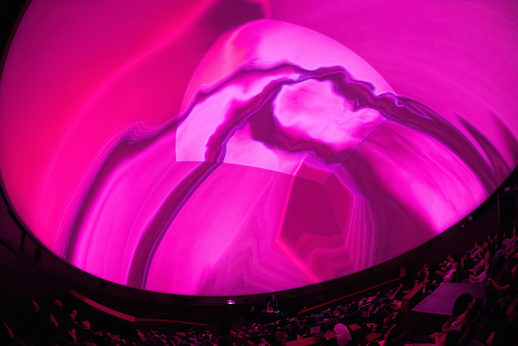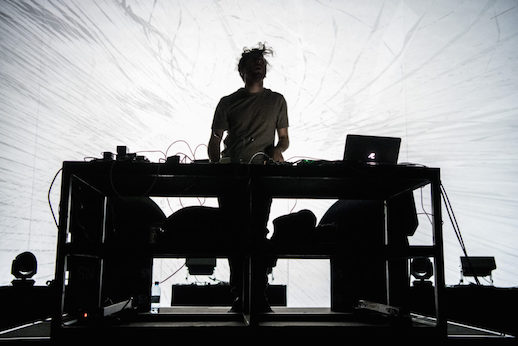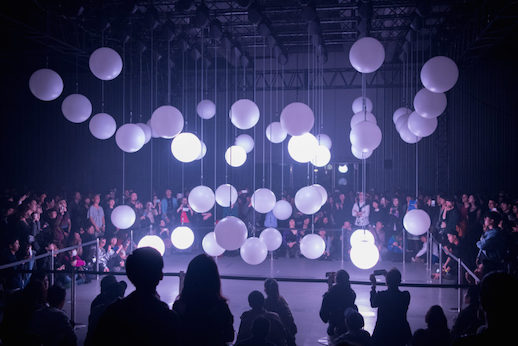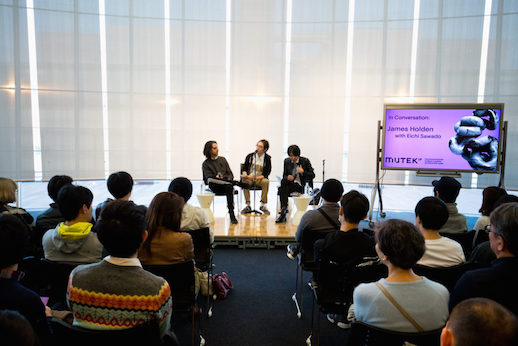MUTEK.JP 2018: An Interview
“Experiencing what you’ve never seen or heard before.”
MUTEK.JP is dedicated to the development of digital creativity in sound, music, and audio-visual art. Cultivating local talent in a global context, MUTEK.JP provides a platform for the most original and visionary artists currently working in their fields. Tokyo Art Beat writer Hugh Hsu spoke with director Maurice Jones to find out more about this year’s Tokyo event, to be held Nov. 1–4.

HH: As Artistic and Communications Director, you’re at the forefront of artist bookings, content curation and promotional strategy. How do you view MUTEK and how big is the team?
MJ: I think of MUTEK as a holistic concept, something that is more than just a music festival. It seeks to bring communities closer together or even to form a new community altogether through the platform of music, art, science and technology. It is a laboratory for artists as well as the audience to experiment freely and develop new experiences that challenge the way a certain subject was invented. It allows an audience to appreciate something in a new way or discover a new appreciation of something that people didn’t even know existed. This area showcases an array of true artistic expression and removes any traditional expectations.
The core team is composed of five people who work on the festival throughout the year. The extended team is around ten people. For the main event, the team expands to over 200 people including production, operation staff and many volunteers.

HH: MUTEK.JP is held in an incredibly unique location: Miraikan – The National Museum of Emerging Science and Innovation. Do you think that the location has become a part of MUTEK.JP’s core identity?
MJ: Absolutely. Miraikan has a history of integrating and showcasing art, science and cutting-edge technology. The ability to synthesise artwork through Miraikan helps to manifest the ideas our artists are working on even further. Following our debut in 2016, we were honored to be welcomed at Miraikan, an institutional establishment at the forefront of innovation, which has collaborated with renowned artists such as Bjork. It was definitely a turning point for us. MUTEK.JP graduated from a small live house venue in [Shibuya’s] WWW with 1800 attendees at our launch, to an event hosting 7000 people in our second year at the renowned Miraikan.

HH: How and why did you bring MUTEK to Tokyo and what are the localisation strategies you have adopted? How is it different to other editions?
MJ: The idea of creating something new here in Tokyo started five years ago, as the team felt the electronic music scene was missing something at its core. A young Japanese crowd was absent since the average age was 35 or higher; the scene was transient and the crowd was unsustainable. There was a strong lack of appreciation for the electronic music scene across different fields, therefore we wanted to raise awareness by establishing a platform.
Initially, MUTEK never sought to expand or translate the concept abroad. People from various cities who visited MUTEK Montreal liked the idea and wanted to apply it to their own city as they felt something like this was missing. Therefore, there was no intentional localisation strategy; most of the team members are Japanese and come from the electronic scene here, so it grew organically in its own way.
Recently, I went to MUTEK Montreal and Barcelona. Each MUTEK has the same concept, but each city adopts and embraces it in different ways. This year 50% of the acts are Japanese and focus on topics more specific to Japanese culture. For example, there are many artists who play with the intersection of tradition and modernity, such as Ken Sugai, who frequents traditional Japanese festivals in the suburbs for inspiration, or Kazuya Nagaya, who works with Zen Buddhist philosophy and singing prayer bowls.
HH: What are the topics or values MUTEK.JP focuses on while curating the festival?
MJ: Diversity is a key value that we bring growing attention to… Steps we have taken to implement this philosophy include having a lineup not comprised solely of techno artists; and this year we have artists that border on classical music and beyond… Besides having more non-male artists in the lineup, we are also shifting attention from a Western-based lineup to a program that integrates more artists from the East Asian region, including places such as Taiwan or Korea.
In the past, the daytime program was more of an addition to the night time programme and wasn’t necessarily curated with the same care and attention. This year, we made a lot of effort to develop a daytime programme that is equal to the night time performances so that it can stand on its own.
There was a huge step-up in curation this year where we thought about how to present an artist in the most impactful way that fits within the venue. We have many premieres this year and performances that are designed specifically for the museum, so that the festival itself is thoroughly collaborative between the artist and museum.
MUTEK goes beyond music and there is an important educational side that includes talk panels, workshops and VR exhibitions. The daytime program “Digi Lab” focuses on artistic and societal questions. This year, there is a new program called the “International Conference of Digital Creativity”, which is more technology and business-oriented. It will touch upon the topics of blockchain, AI and VR through the lenses of digital creativity.

HH: What are your future plans?
MJ: Next year we want to initiate new collaborations within our local environment, the global MUTEK network and beyond. We have some exciting projects in the pipeline for next year, and of course Edition 4 on Cultural Day in November 2019. We are always open to new content, ideas and discussions about anything that aligns with and builds on what we are doing. In the end, it is a community-driven project. We don’t see our audience as simple consumers, but an essential interactive part of our evolving platform. We aim to establish a dynamic dialogue between performer and audience and harness its creative power.
Photo Credits: Yu Takahashi, Ryu Kasai and Shigeo Gomi



